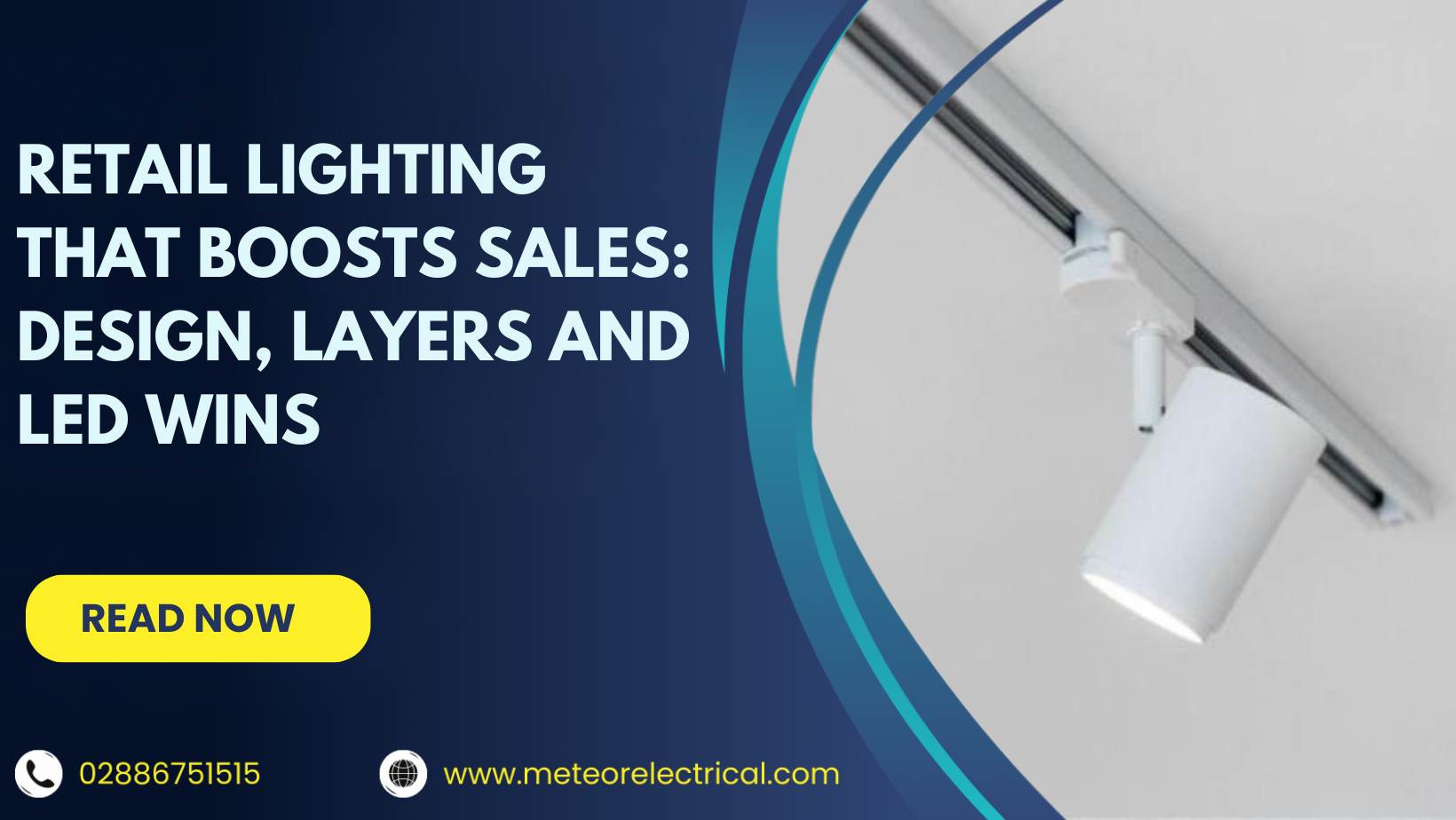Retail Lighting That Boosts Sales: Design, Layers and LED Wins
Retail Lighting That Boosts Sales: Design, Layers and LED Wins
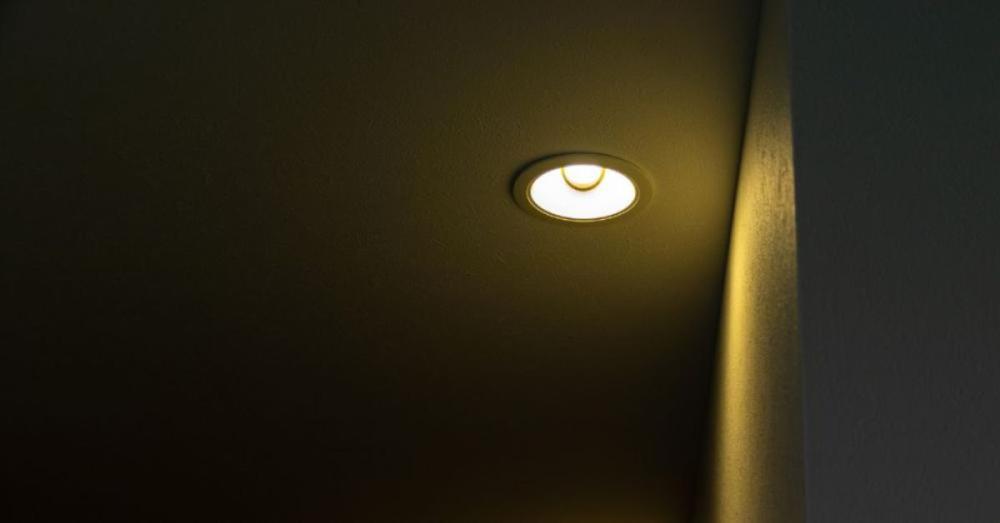
Retail Lighting That Sells: Design, Layers, and Smart LED Options
Great retail lighting blends science and storytelling, turning browsers into buyers while keeping energy bills in check. It’s not just about making products visible; it’s about creating moods, guiding journeys, and supporting your team. When done right, lighting influences dwell time, conversion, returns, and even staff morale. For practical advice on visual comfort and workplace standards, see the Health and Safety Executive professional guide on emergency lighting and best practice.
Why Retail Lighting Design Matters for Sales and Safety?
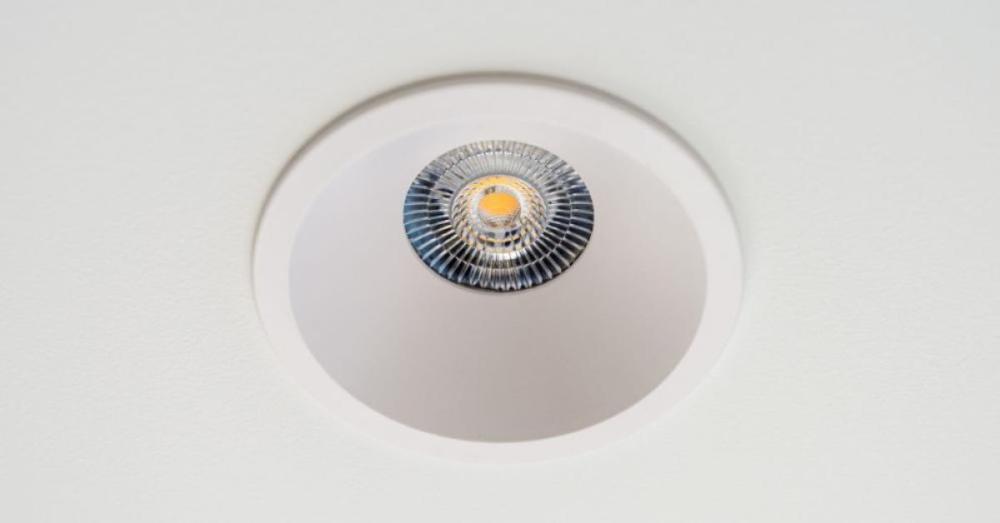
Lighting does far more than set the mood. It shapes purchasing behaviour, product perception, navigation, safety, and brand recall. Accurate colour rendering helps shoppers judge fabrics, finishes, and freshness, reducing returns and building trust. Clear visual hierarchy draws the eye to promotions and hero displays, while comfortable light reduces fatigue for staff at tills, fitting rooms, and stock areas. In short, retail store lighting design layout is a shop’s silent salesperson.
How to Choose Retail Light Fixtures?
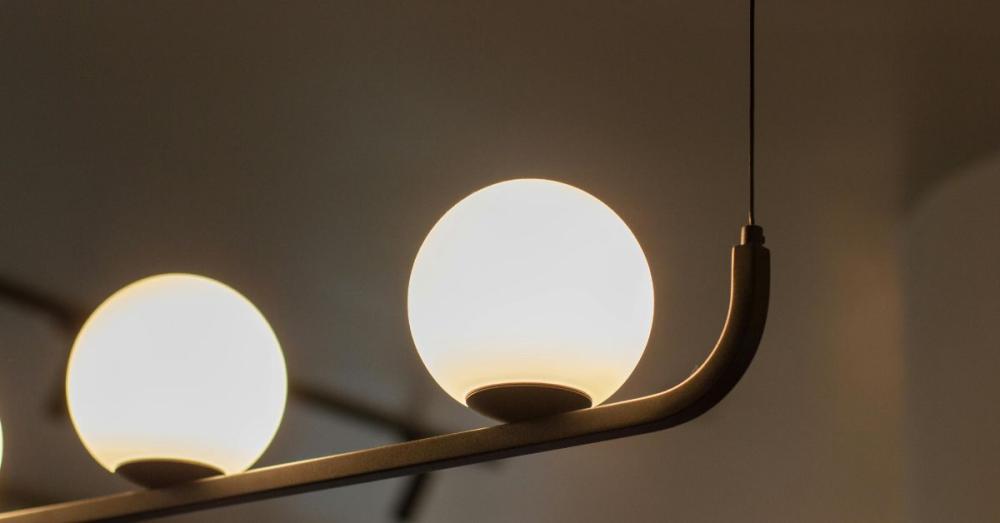
There are many options: architectural downlights, continuous linear runs, pendants, track spots, wall washers, and shelf lighting. Ask two key questions:
How Does the Fixture Add to Your Brand Image?
Fittings communicate personality. Minimal, trimless luminaires suit premium edits; natural finishes fit lifestyle or artisanal brands; decorative pendants elevate boutique and jewellery environments. Keep glare in check, evaluate Unified Glare Rating (UGR) where applicable and standardise a compact “kit of parts” for consistency.
How Does the Light Highlight Your Product?
Choose beam angles, output, and colour rendering to match your category. Medium beams for apparel rails (CRI 90+ for true tones), narrow spots for mannequins and glassware, wall washers for branding and textured walls. Put the brightest light on the most important story, this simple rule underpins any retail store lighting design layout.
Should You Add Downlighting and Uplighting in Retail Spaces?
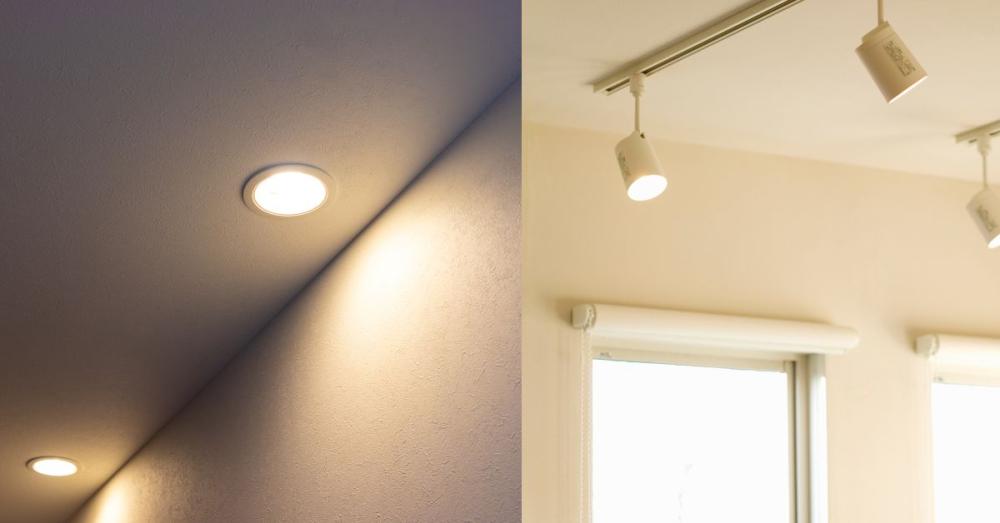
Downlighting
Downlighting is the workhorse. Ceiling luminaires and track heads provide general visibility for aisles, service counters, and pathways. Use low-glare recessed downlights or microprism panels for soft, even ambient light. Track systems let you refocus beams when merchandising changes. Outdoors, downlights improve safety and ease transitions between street and shop.
Uplighting
Uplighting adds drama and depth. Wash columns, plants, and textured walls, or lift high ceilings to avoid cave-like effects. In window displays, subtle uplight prevents flat-lit mannequins after dark and helps graphics read from the street. This blend of down and up is central to many LED retail lighting solutions.
How to Choose Between Downlighting and Uplighting?
Choosing between LED downlighting and uplighting depends on function and feel. Downlighting drives visibility and wayfinding; uplighting adds theatre and visual balance. The most successful LED lighting solutions mix both, so stores feel comfortable to navigate and interesting to explore. This flexibility is key to modern energy efficient retail lighting.
Source - Hsong Lighting
Tips For Creating A Great Lighting Design For Your Retail Space
Choose The Right Colour Temperature and Brightness
Colour temperature shapes mood:
- 2700–3000 K: warm, intimate (lifestyle, homeware)
- 3500–4000 K: versatile neutral (general retail)
- 5000–6500 K: crisp, energising (tech, back-of-house)
Brightness depends on ceiling height and reflectance. Aim for 300–500 lux in sales areas, 750–1000 lux on feature displays. Prioritise high CRI (90+) and strong R9 for fashion, cosmetics, and food. This is foundational to any retail store lighting design layout.
Make Sure There’s Even Illumination
Uniformity keeps customers comfortable. Avoid hotspots and deep shadows by spacing fixtures correctly and selecting appropriate optics. Use wall washing to lift vertical surfaces, a lux meter can confirm your averages and uniformity ratios.
Add Exit and Emergency Lights
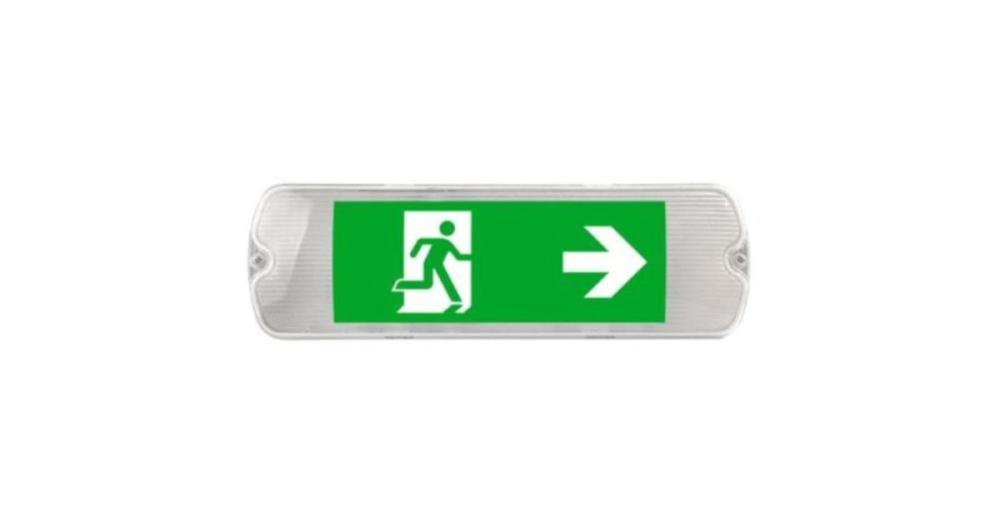
Robust escape signage and emergency lighting are non-negotiable for safety and compliance. Choose slim edge-lit exit signs, combination units for stair cores, and test regularly. Follow standards referenced by CIBSE and your local authority.
Think About Energy Efficient Technologies

LED has transformed retail lighting economics. Lower energy, longer life, better colour, and faster payback are now standard. To maximise savings, add presence sensors in stockrooms and corridors, use daylight harvesting near windows, and set time-based scenes. Standardise drivers and modules for simpler maintenance. This delivers energy efficient retail lighting that supports sustainability without compromising ambience.
Source - Grundfos
How to Layer Retail Lighting: Ambient, Accent, Task
Build from ambient to accent to task, then refine with controls:
- Ambient Lighting: Even, low-glare base for comfort and orientation. Use downlights, panels, or linear runs.
- Accent Lighting: Track spots, wall washers, and shelf strips to highlight displays. Accent lighting for retail displays adds sparkle and directs attention.
- Task Lighting: Local brightness for tills, fitting rooms, and back-of-house. Vertical lighting in fitting rooms boosts confidence and reduces returns.
- Controls: Scenes, sensors, and daylight linking for flexibility and savings.
Smart Lighting Controls for Retail
Storewide controls let teams recall presets for weekdays, weekends, or events. Open protocol systems ensure longevity. Dashboards and alerts help manage energy and maintenance at scale.
Material Choices and Visual Comfort
- Matte beats mirror: Choose matte or micro-textured optics to avoid glare.
- Mind the UGR: For cash desks, target comfortable glare indices.
- Colour quality counts: Specify tight binning and CRI/R9 suitable to category.
- Thermal matters: Pick robust, well-cooled luminaires for long life.
Maintenance and Longevity
- Standardise lamps, boards, and drivers across sites for easy spares.
- Specify realistic useful life (e.g., L80/B10) and warranty support.
- Keep luminaires accessible for cleaning; dust and heat shorten life.
- Include an annual aim and clean in your maintenance plan.
Budgeting and ROI
- Prioritise hero zones for maximum visual impact.
- Use sensors and scenes to cut run-hours where light isn’t adding value.
- Track conversion and returns: Improved light quality can lift sales and reduce returns.
- Model energy and replacement savings alongside expected sales uplift.
Five Common Pitfalls and How to Avoid Them
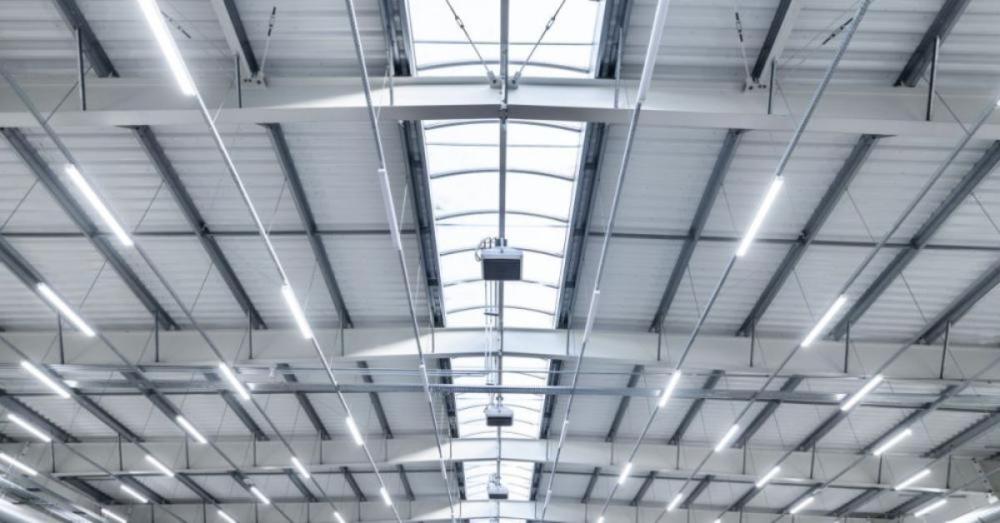
- Over-lighting: More lumens aren’t better. Layer instead.
- Flat verticals: Merchandise lives on walls, light them.
- Glare bombs: Tune angles and accessories to avoid eye strain.
- Uncommissioned stores: Never open without aiming and scene-setting.
- Control sprawl: Pick a control approach your team can actually use.
Conclusion: Light for Impact, Safety, and Savings
Creative, strategic lighting transforms retail, from first glance at the window to the final transaction. By layering ambient, accent, and task light, choosing high CRI LED lights for shops, and deploying smart lighting controls for retail, you create stores that are inviting, products that look their best, and teams that work in comfort. Accent lighting for retail displays builds visual hierarchy, while energy efficient retail lighting and sensors reduce costs without sacrificing ambience.
Ready to make lighting your silent sales ally? Explore the latest in architectural downlights, track, wall washers, emergency signage, controls, and smart lighting controls for retail at Meteor Electrical. From concept to commissioning, our product range and expert advice help you shine brighter in both product and performance.
Discover your perfect retail lighting solution. Browse and buy with confidence at Meteor Electrical.
Frequently Asked Questions
1. What effect does lighting have on shopper behaviour?
Lighting shapes mood, boosts visibility, and raises perceived value, which increases dwell time and conversion. Use high CRI (90+ with strong R9) and clear focal accents to guide attention to hero zones.
2. What colour temperature is most effective for retail stores?
2700–3500 K feels warm and cosy; 3500–6500 K delivers crisp clarity. Tunable white lets stores adapt ambience by time of day and season while keeping brand‑consistent colour.
3. Do downlighting and uplighting both add value?
Yes. Downlighting provides clear ambient light for circulation; uplighting adds vertical brightness and drama. Combining both creates a balanced, layered experience.
4. Is LED lighting recommended for retail?
Absolutely. LEDs offer top energy savings, long life, flexible optics, and excellent colour quality. Specify high CRI LEDs for fashion, beauty, and food to reduce returns and improve presentation.
5. How do smart lighting controls benefit retailers?
Dimmers, sensors, scenes, and zoning cut energy use, extend equipment life, and keep presentation consistent. Daylight and presence control trim run‑hours without sacrificing ambience.

